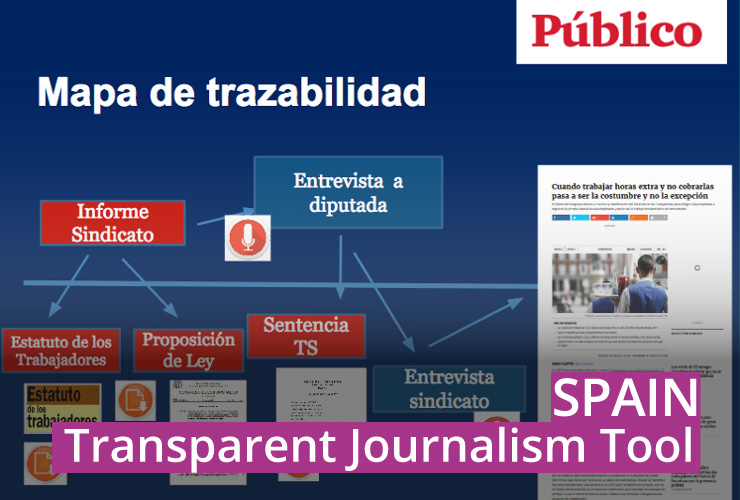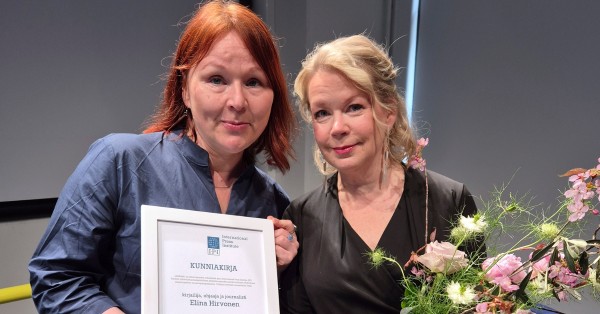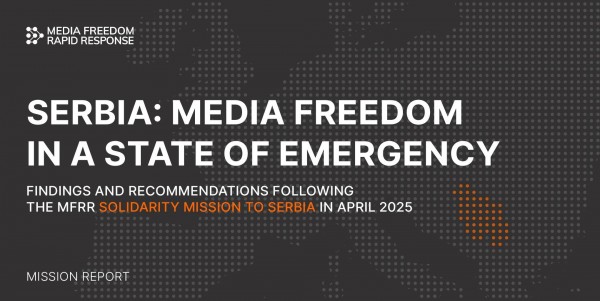As the crisis in Spain’s semi-autonomous Catalonia shot to the front pages of media outlets in the fall of 2017, many untrue stories, images and narratives started circulating on social networks.
Internet users both for and against Catalan independence took part in distributing content to boost their own ideological positions. Texts that seemed like news articles were combined with pictures from completely unrelated events to show, for example, police brutality. Some later suggested that Russian operatives had a hand in shaping public opinion on the matter.
In an effort to counter false information and build trust in fact-based journalism, many Spanish media outlets have started fact-checking operations or dedicated entire sections to debunking hoaxes.
One such initiative is the Transparent Journalism Tool, set to be launched by the Spanish online news site Público.
The aim of the initiative, according to Lydia Aguirre, a journalist and the tool’s project manager, is to “introduce radical transparency in the editorial process”.
She explained: “Instead of working with algorithms to try to figure out whether a news story is true or false, we will present our news with a ‘Transparency Map’ that lets citizens see all the information behind a story.”
The information will include the reasons for covering a certain topic, the number of people working on the content, validated sources, consulted documents, and so on.
“Citizens will be able to trace, and to replicate if they want, the whole editorial process,” she said.
Making journalism transparent
Aguirre told IPI she believed that the “fake news” phenomenon, and the discussion around it, had increased the level of polarisation in political discourse and damaged “the already low levels of trust that citizens have in the media and political institutions”.
She said that the spreading of false information by both public and private institutions in Spain had become common and was not restricted to specific political conflicts or issues, such as Catalonia.
“When lying is tolerated as a valid instrument of political, social or commercial action, without having consequences, it is much more difficult to determine what is or is not ‘fake news’, and who has the moral authority to establish what is true and what is false.”
Aguirre said that while any efforts to counter disinformation were worthy of praise, she remained sceptical of the Spanish government’s insistence on blaming Russian sources for pushing fake information on the Catalonia issue and of legislative efforts to exert more control over information in the media.
Instead of going after the fake stories themselves, Público decided to make its own journalism fully transparent to those readers who wanted to get to the bottom of things.
Virginia Pérez Alonso, Público’s deputy editor-in-chief and supervisor of the Transparent Journalism Tool, told IPI that the goal was to “recover credibility”.
“When people come to my media and read my stories, I want them to have the chance to know more about how those stories were made,” she said.
She suggested that if other outlets would undertake a similar transparency exercise, things could start to change: “I think this would cultivate more reader trust.”
Restoring trust
In addition to giving readers the possibility of retracing the journalistic process, Aguirre told IPI, Público displays its “Público flags” – which indicate its news priorities and coverage areas, such as social justice, equality, fight against corruption, and political abuse – to explain to readers why it covers certain topics.
The Transparent Journalism Tool, which is run by a small team of editorial and technical professionals, has received interest as well as support in the form of consultations with both public and private institutions, such as the Madrid Press Association, the International Advertising Bureau, the Plataforma para la Libertad de la Información, the Online Publishers Association Europe, and the Transparency Bureau of the City of Madrid.
Aguirre said that the main takeaway from the consultations was that “news traceability is key to restoring citizens’ trust in the media”.
“Even if only a few people consult the Transparency Map,” she said, “the important thing is to know that it exists and you can check it if needed.”
She offered one final suggestion: “As a journalist, you must apply to yourself the same rules of strict honesty and transparency that you should demand from governments, private companies and any other public or private institutions.”
RELATED ARTICLE: In Spain, Catalonia crisis sparks ‘fake news’ debate
ABOUT THIS SERIES: IPI’s reporting project Contending with “Fake News” examines the particular dynamic around the “fake news” debate in five EU countries, offering a look a the sources, styles and goals of disinformation in each country as well as the extent to which that debate has affected public discourse, politics and press freedom. The series also profiles five initiatives that have adopted innovative solutions to addressing disinformation and building trust in fact-based journalism and that could potentially serve as models for similar efforts elsewhere. Read more.



